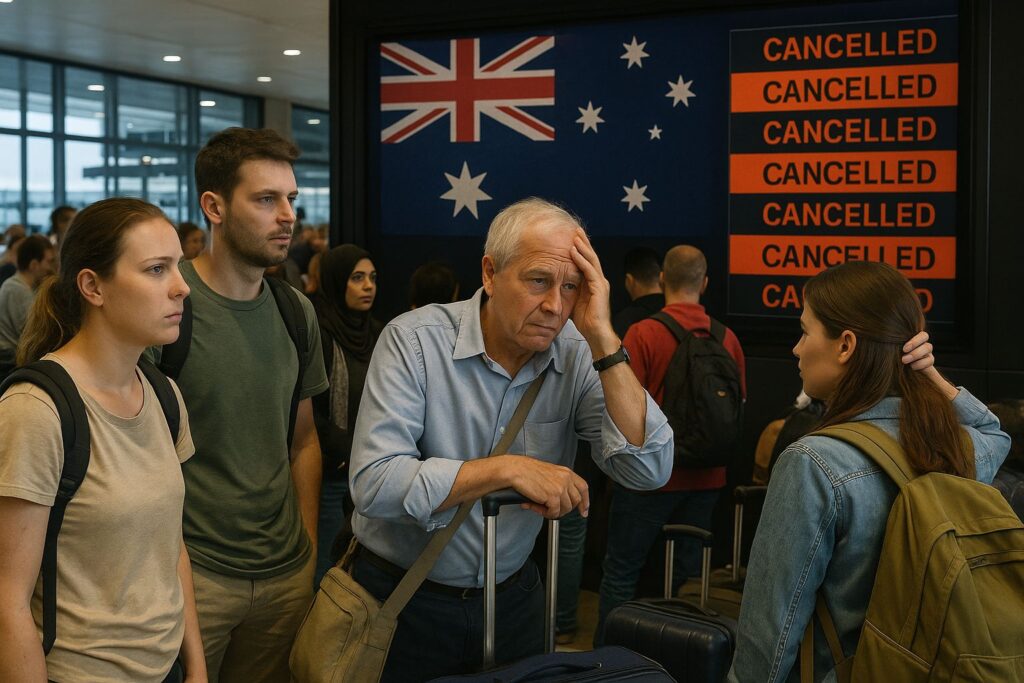
Australia confronted foremost air travel disruption after its airspace’s sudden closure because of vast technical defects within the air traffic control device. The unexpected shutdown caused airlines to cancel and delay masses of flights, leaving thousands of passengers stranded at the most important airports.
Why Was the Airspace Closed?
The Civil Aviation Safety Authority (CASA) and Airservices Australia confirmed that a technical fault inside the critical device tracking flights poses a critical danger to aviation safety. Due to not being capable of taking any backup machine right away, the authorities have decided to speedily suspend all flights to avoid any capacity injuries.
This shutdown directly influences busy hubs, which encompass Sydney, Melbourne, Brisbane, and Perth, interrupting both home and global flights.
Impact on Passengers
Closure caused chaos at airports:
- Long queues at airline counters.
- Families are trapped with canceled holiday plans.
- Business travelers are remembering important meetings.
- Students and migrants are facing a visa deadline.
Airlines like Qantas, Virgin Australia, and Jetstar announced an apology statement while offering Refund options and limited compensation. Nevertheless, there was disappointment among the passengers as some waited for more than 10 hours for the update.
Global Repercussions
Since Australia’s airports function as important global transit hubs, the airspace moreover affects passengers from Asia, Europe, and the Middle East. Air traffic controllers have diverted several flights bound to Los Angeles, London, and Singapore to New Zealand and Indonesia to keep away from the Australian sky.
This disruption highlighted how important Australia’s aviation network is for global connectivity, especially for countries relying as a midway stop.
Government Response
The Transport Minister of Australia assured the public that security comes first. The company speedily deployed the engineers, and they resolved the technical mess within a number of hours. However, the knock-on effect of the delay lasted for approximately days, as the airways struggled to remedy flight schedules and renovate aircraft.
The officials promised a thorough investigation into the error and additionally discussed investing in superior aviation infrastructure to keep away from similar incidents in the future.
Expert Opinions
Aviation experts mentioned:
- The modern air traffic system is usually highly reliable, but a rare breakdown can cause nationwide shutdowns.
- Australia must consider a backup system to reduce dependence on a single control center.
- Training and emergency protocols should be increased to reduce disruption.
Lesson Learned
The incident showed importance:
- Stronger contingency planning for aviation systems.
- Better communication between airlines and passengers during crises.
- Investing in modern, fail-safe technology for important infrastructure.
The Big picture
For passengers, the airspace closure reminded them how delicate the aviation sector could be when unexpected issues arise. For Australia, it highlighted the immediate need to modernize air traffic control systems to match the increasing demands of international travel.
Despite the temporary inconvenience, quick action by the authorities prevented major accidents and reassured passengers about the country’s commitment to safety first.

